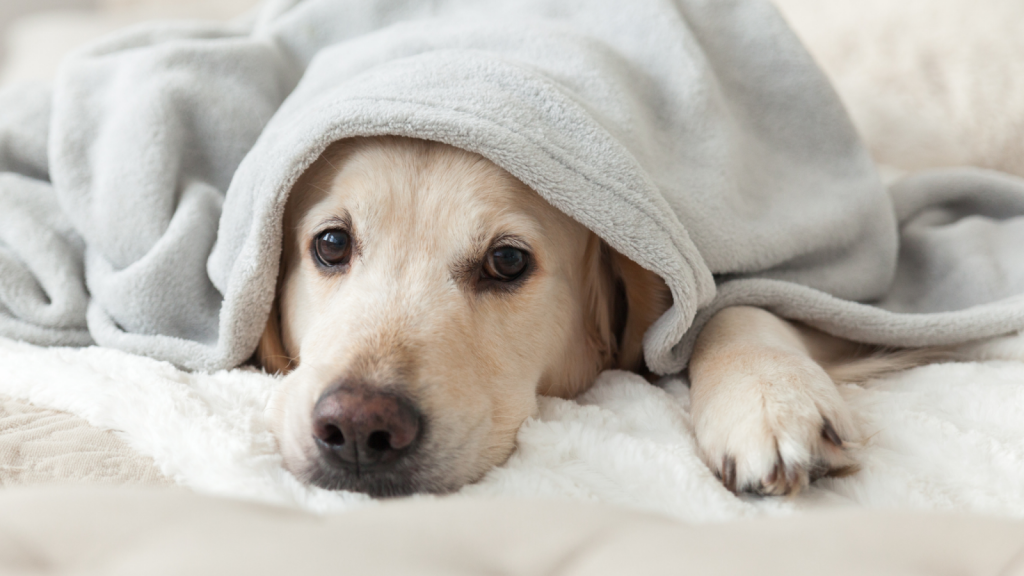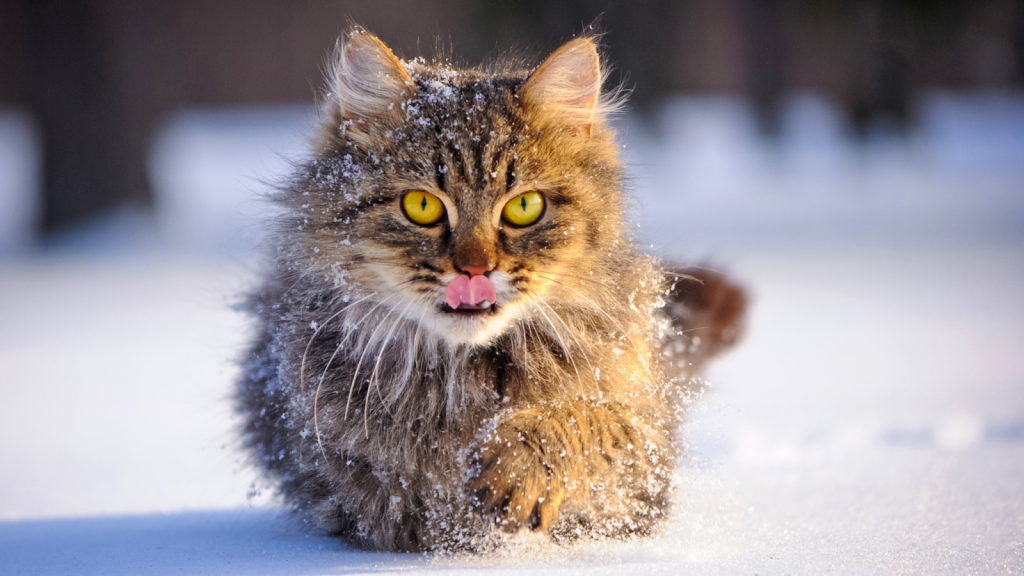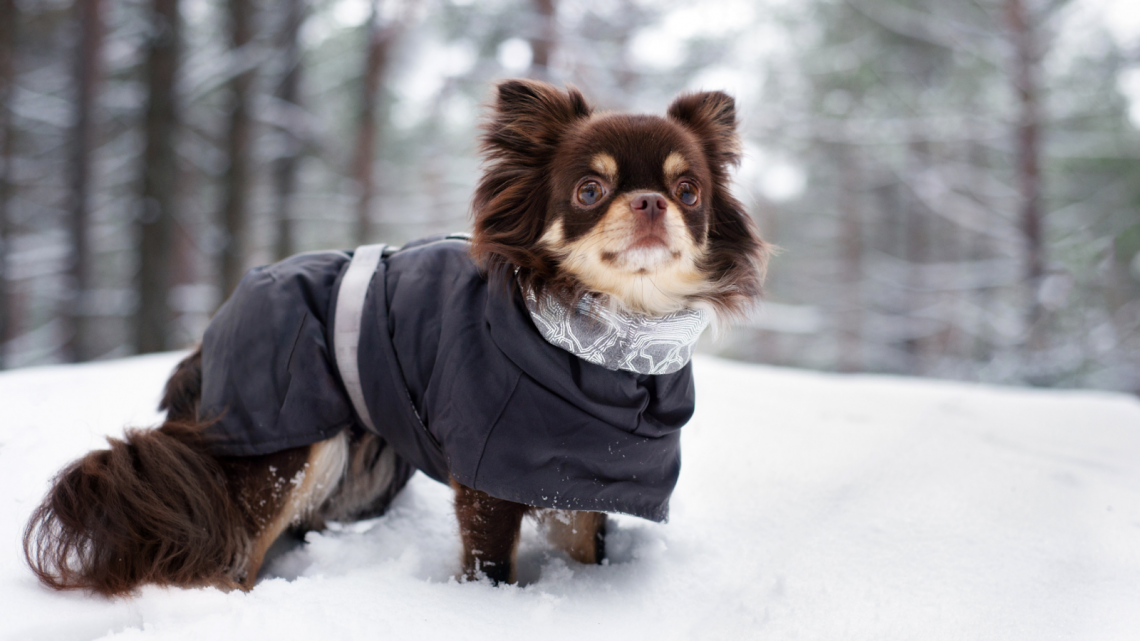As the days are getting colder, we need to make sure we’re looking after those in our family that can’t simply pull on a jacket to get warmer. Dogs and cats can suffer from the winter cold just the same as us. Winter Pet Care Guide for Dogs & Cats is very important. In the past it was often thought that dogs and cats were naturally outdoor animals and the weather didn’t really bother them, but this is not entirely true.
When fur is not enough
Here’s our Winter Pet Care Guide for Dogs & Cats. While they do have fur all over their bodies, they are actually conditioned to the weather they experience. During their moult, if their environment has been regulated, such as in home heating or cooling, then they will not have as thick a coat as if they have spent the entire time outside. If they have been staying in an outside environment where their bodies have been exposed to the gradual decrease in temperature. They are more likely to have sufficient coat density and fat layers to cope during the colder months. Just like people once animals have started relishing in the comfort of being inside for most of the year, they get used to it. They may struggle in colder conditions.
Helping your pet out during the colder months can be a challenge. However, with careful consideration of their needs, it can be accomplished quite easily. As with all pets the more attention you pay to them, the quicker you’ll pick up on subtle indicators that will show you if they’re struggling with any issues. In this article, we’ll cover some of the basics in how to care for dogs in winter. We’ll also discuss how to keep outside cats warm in winter. We’ll also cover hygiene and exercise routine. How to exercise your dog in the winter, and how often should I wash my dog in the winter? This can be included in your guide for cold weather dog care to keep your pets happy. Follow along in this short article and uncover what it’ll take to look after your favourite family members this winter!
How to care for dogs in winter
Winter Pet Care Guide for Dogs & Cats can be a hard time for most household pets. Just like us they can suffer from changes in the weather. The best way to keep them happy is to maintain your existing routines. Try not to make any changes that may cause them to feel anxious. If your dog predominantly resides outside, they may be more accustomed to the cooler weather, but you can still help them out. You can move their kennel into a location that is closer to the house. Turn the entrance so it faces away from any cold drafts.
Clean out the kennel
It’s a great idea to give their home a total cleanout at this time, especially because they’re more likely to be spending additional time in there. Have some fresh bedding ready to go and wash everything out. Throw it away if it is past its time. An outside dog should have developed a thick winter coat. This may require more grooming to take care of it.
To learn about Winter Pet Care Guide for Dogs & Cats. It’ll all come down to what breed of dog you have and if they are able to cope with changes in the weather. It would be helpful if your dog could simply tell you! But as that’s not really an option, you’ll need to rely on visual clues. This may include a reluctance to go outside to the toilet and losing interest in regular exercise. All this points to your dog not feeling comfortable going outside. The cold weather can affect all animals. Luckily enough that there are many good quality dog jackets on the market. Take your dog for a short trip to your local animals supplies store and pick out one that can give them a good amount of protection.
Dog jackets
When looking for a pet jacket you can consider a few different things, such as:
- Overall fit and appearance
- Coverage on the belly area; especially for short legged dogs
- Zips or buckles, buy what is easier for you to put on
- How durable it is; buying a higher quality product may mean you’ll get a few years out of it
- How weatherproof it is; for an outside dog you may consider rainproof, and for an indoor dog you may need extra warmth
- Does it have any accessories? Some jackets have pockets and clips so your dog can carry their own poop bags and other items
- Night-time visibility; with the days getting darker sooner this will help during walks
During winter it is especially important to keep your pet’s mind stimulated. Try not to let them slip into becoming a doggie couch potato. If this means making their walkies time a little earlier than normal then that’s what you’ll need to do.
Cold weather dog care to keep your pets happy
Pets that are kept inside may not be as affected by outside weather conditions. However, you may still need to provide specialist cold weather dog care to keep your pets happy. Make sure they have a warm place to sleep. This is especially important if you tend to turn down the heating at night. Keep them all snuggled up and feeling good for the night. In some cases it could be best to move them into the same room that you use. Places that get quite cold in the winter, you can even invest in an indoor toileting option that they can use when it is especially cold, such as early morning. Nobody likes getting frosty toes!
With cats you may have a much easier time keeping them inside, and toileting is often not a problem. But it may be noticeable that their litter tray is filling up sooner rather than later. To keep on top of things it may be ideal that you invest in an additional litter box. This will allow them a fresh option. There are a few beds that cats can use. You may find the cocoon style (almost like a sleeping bag) are something that will keep them extra warm or cold evenings. If your cat tends to go outside make sure they can get back inside through a cat door instead of being reliant on having the door opened for them.

How to exercise your dog in the winter
Learning how to exercise your dog in the winter can assist in keeping your dog happy and healthy. When the weather turns a little colder it can be very easy to stop walking outside unfortunately, this can have a negative impact on your dog. When a dog is bored or doesn’t get enough exercise, it can easily become anxious, or destructive. A highly strung or anxious dog can begin to exhibit odd behaviour. This can include excessive barking, scratching, and whimpering. In some cases when a dog is bored due to lack of exercise, they’ll start to look for other ways to entertain themselves, and this can be chewing, digging, and barking; all of these behaviours are generally unwanted and can cause issues in the home.
In looking at how to exercise your dog in the winter, it can be much the same as the summer times, but you may need to go at a different time of the day to take advantage of the sun while it is out; unfortunately, this can mean that your 8pm evening walks are out the window! If you can’t walk them any earlier than normal, then you need to be prepared for the cold. This may include having suitable dog jumpers and booties (if there is frost or snow present); booties are great for keeping feet cool in the summer as well!
If you simply can’t go outside to walk your dog, then look for interactive toys to keep their minds engaged. This can include toys that will release treats when played with, and toy/treat bones to keep them occupied for many hours.
How often should I wash my dog in the winter
The answer for how often should I wash my dog in the winter will be reliant on how active your dog is at this time. If they are inside for most of the day, then they’re going to stay reasonably clean so they may not need washing any more than they usually would. If they tend to go outside and lie down in puddles then you may need to wash them more often. When you’re washing your dog in winter it is more important to dry them properly. During summer months it can be easy to let them run outside and let the warm air do the job for you, but in winter this generally is not an option; unless you live in the northern part of the country!
Use a regular hair dryer on a medium warm setting and dry them with a towel. Try to get them as dry as possible, and let them sit it out in front of a fire, or some other warm part of your home. In winter you shouldn’t be sending our dog out while they are wet so avoid it at all costs; if you don’t have the right equipment to dry them properly it may be good to call a professional and get them to do it for you.

How to keep outside cats warm in winter
Cats are usually fiercely independent. If they want to go outside, they can be highly determined to do so regardless of what you want. Knowing how to keep outside cats warm in winter can bring you peace of mind that your cat is being looked after. You will know that the cold weather is not bothering them. Most outdoor cats are highly capable of looking after themselves. They can find a place of shelter in rain and other cold weather. It is a good idea to have a cat door installed so they can seek shelter inside if things really start to get bad outside. Training a cat to use a door is often as easy as pushing them through it a couple of times. This will give them an understanding of how the door works.
If your cat is stubborn and won’t come in at night during winter, you can try putting out a snuggly bed in a place they have slept before. This can give them a sanctuary of sorts and somewhere to go if they can’t, or don’t want to, come inside. For the best protection, you can install a cat shelter. These handy items are like an open shed and they can give your cat all the ‘freedom’ of being outside, but with several areas that can protect them from getting too cold. Also, as they are enclosed in the unit if it gets really cold you can simply go outside and carry them back in!


No Comment